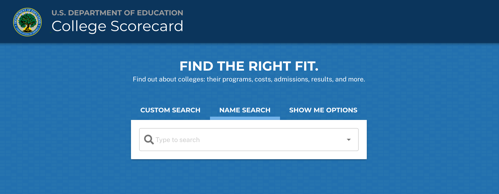Higher Education: Version 2.0 of the U.S. Dept. of Education “College Scorecard” Database Now Live
From the U.S Dept. of Education:
For the first time ever, students [who use College Scorecard] will now have access to information on the median earnings and median debt of a school’s graduates, based on their chosen field of study. That means, for example, a student interested in studying engineering can now compare outcomes, such as first-year earnings and student loan debt, among engineering programs within an institution and among those offered at other schools. Students will be able to see if a career and technical education program at a two-year institution might generate a higher return on investment than a more traditional program at a four-year institution. Rather than having to rely on reputation-based rankings, the Scorecard will also allow students to choose a program based on the outcomes of students who have already completed that program.
Previously, Scorecard users could only see the median earnings and median debt at the institutional level, which is a fairly meaningless metric given the diversity of programs and outcomes at any given single school. The Scorecard now shows the range of earnings among the various programs an institution offers.
The Scorecard also builds upon prior updates to include all students, including transfer and part-time students, to provide comprehensive data on graduation rates. Instead of focusing only on first-time, full-time student graduation rates, the Scorecard allows users to calculate graduation rates whether they are full-time, part-time, first-time, or transfer students. With the click of a button, users can see the likelihood of graduation for students like them.
[Clip]
The Scorecard’s search function in general is more intuitive and dynamic than before, allowing prospective students to more easily find and compare schools that meet their needs. Students and their parents can now search for schools by acceptance rate, ACT/SAT scores, and location (including a “close to me” feature).
[Clip]
In addition to its consumer website that highlights a subset of its available data, College Scorecard continues to make over 2,000 data elements available to developers, researchers, and others through an application program interface (API).
Direct to Complete Announcement
Direct to College Scorecard
Filed under: Data Files, News, Patrons and Users
About Gary Price
Gary Price (gprice@gmail.com) is a librarian, writer, consultant, and frequent conference speaker based in the Washington D.C. metro area. He earned his MLIS degree from Wayne State University in Detroit. Price has won several awards including the SLA Innovations in Technology Award and Alumnus of the Year from the Wayne St. University Library and Information Science Program. From 2006-2009 he was Director of Online Information Services at Ask.com.



